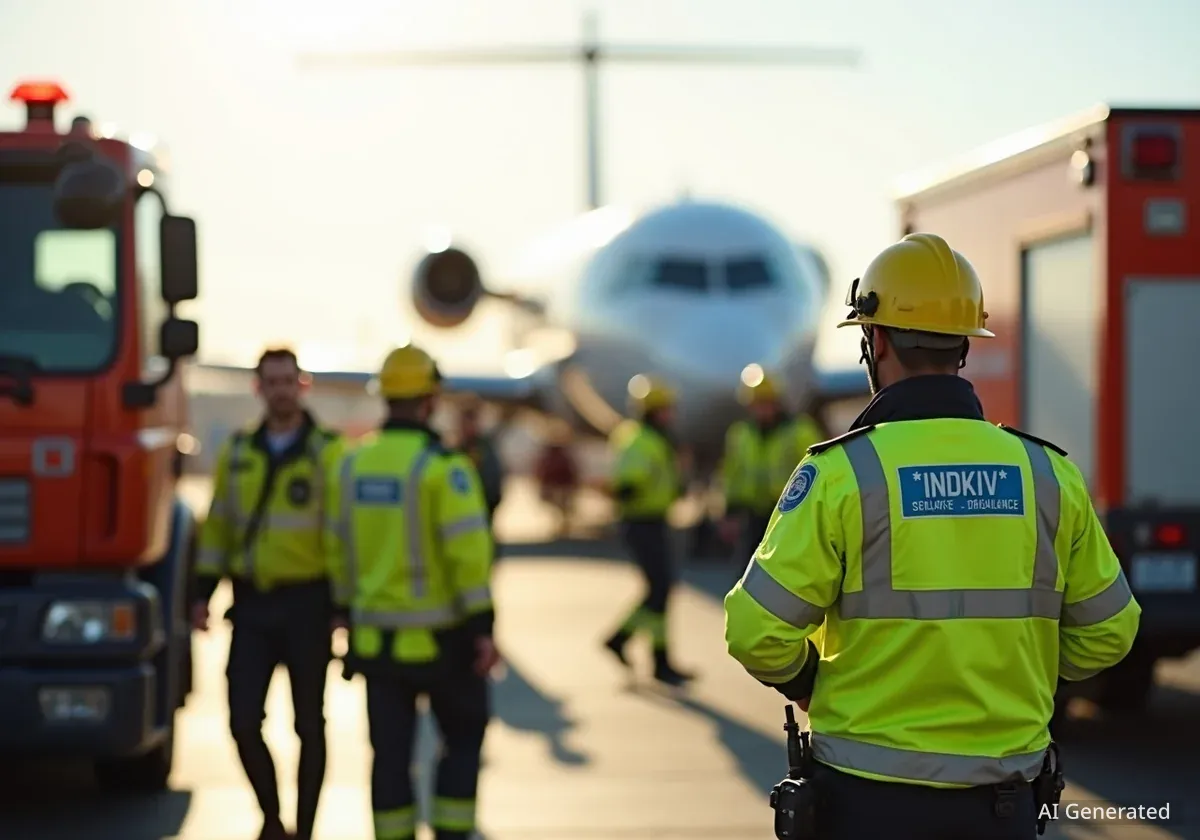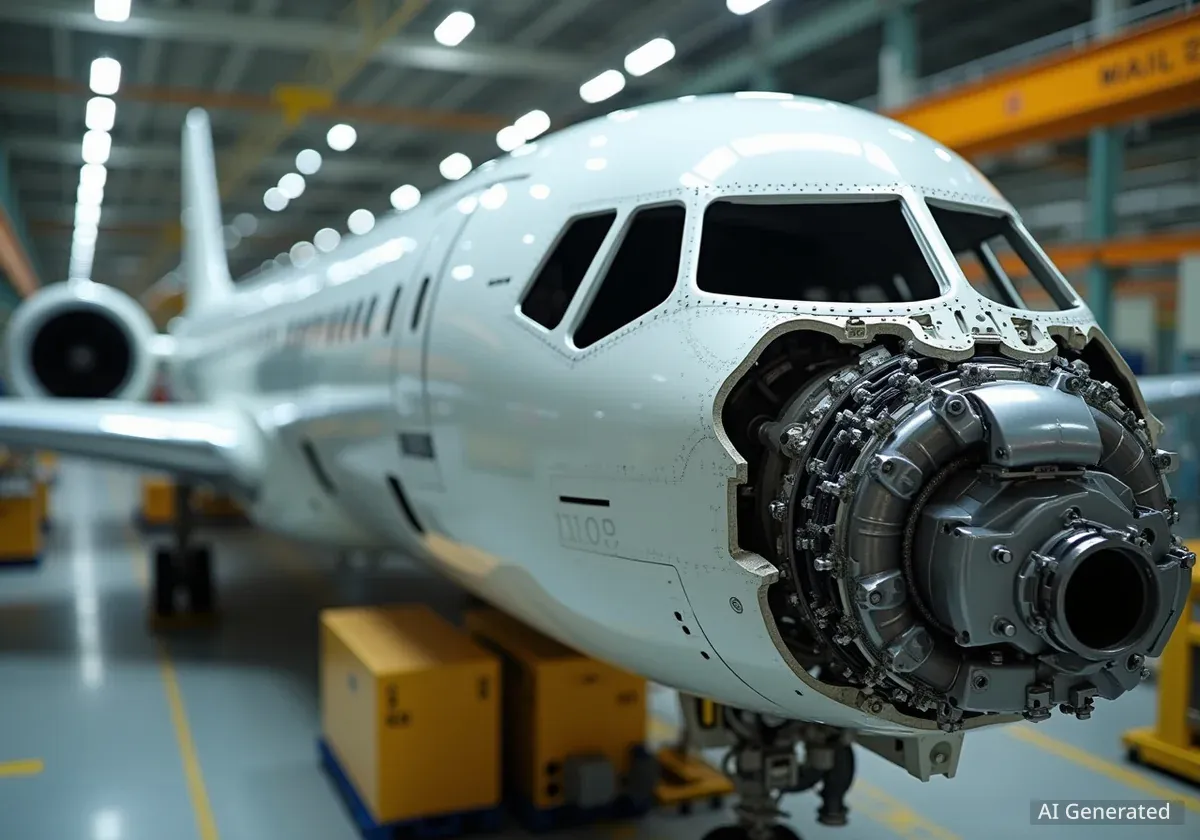Boeing is redefining the standards for long-haul passenger comfort with its new 777X aircraft, which features a wider cabin and significant interior upgrades. This new design directly challenges the Airbus A350, an aircraft that has long been marketed for its spacious interior, setting a new benchmark in the competitive widebody market.
Key Takeaways
- The Boeing 777X cabin is four inches wider than its predecessor, the 777-300ER, allowing for more comfortable seating configurations.
- Passenger-focused features include larger windows, advanced LED lighting, and redesigned overhead bins with significantly more storage capacity.
- These improvements position the 777X to compete directly with the Airbus A350 on passenger experience, particularly in economy class.
- The aircraft has secured over 350 firm orders from major international airlines, including Emirates, Lufthansa, and Qatar Airways.
A New Era for Widebody Cabin Design
For years, Airbus has promoted its A350 with the "eXtra Wide Body" (XWB) designation, emphasizing its passenger comfort advantages over competitors. This marketing was particularly effective against Boeing's popular 777-300ER, which often utilized a tighter 10-abreast seating layout in economy class.
In response, Boeing developed the 777X not just as an update, but as a complete reimagining of its flagship widebody. The primary goal was to enhance the passenger environment, starting with the fundamental dimensions of the cabin itself.
By increasing the internal cabin width by four inches, Boeing provides airlines with greater flexibility. This extra space can be used to offer wider economy seats, even in a 10-abreast configuration, directly addressing a common passenger complaint on long flights.
The Airbus A350 XWB
When Airbus launched the A350, the XWB branding was a strategic move to highlight its spacious cabin, which comfortably accommodates a nine-abreast seating layout. With over 570 aircraft already delivered to more than 40 airlines, the A350 has established a strong global presence based on efficiency and passenger comfort.
Why Cabin Width Is Crucial for Long Haul Flights
While a few inches might not seem significant, on flights lasting 12 hours or more, small differences in personal space have a major impact on passenger comfort. The expanded width of the 777X cabin translates into tangible benefits for travelers.
For economy passengers, it can mean less shoulder contact with neighbors and a less confined feeling. For airlines, it opens up possibilities for more generous premium economy sections or innovative business class suites without sacrificing capacity.
The ability to offer a more comfortable 10-abreast layout makes the 777X an economically attractive option for airlines. It allows them to maintain high passenger counts while marketing an improved in-flight experience, a combination that is critical for profitability on ultra-long-haul routes.
Passenger-Centric Features of the 777X
Boeing's focus on the passenger experience extends beyond just cabin width. The company collaborated with design consultancy Teague to introduce several features aimed at reducing travel fatigue and stress.
Larger Windows and Natural Light
One of the most noticeable upgrades is the size and placement of the windows. The 777X windows are significantly larger and positioned higher on the fuselage compared to previous models. According to Boeing, this design ensures that nearly every passenger, including those in middle seats, has a view of the outside.
Increased exposure to natural light is known to improve mood and help regulate the body's internal clock, which can reduce the effects of jet lag. This makes the larger windows a functional enhancement as much as an aesthetic one.
Window Size Comparison
- Boeing 777X: 162 square inches per window
- Airbus A350: 125 square inches per window
The 777X windows are also taller, measuring 17.36 inches compared to the A350's 12.7 inches, allowing for a more expansive view.
Advanced Cabin Lighting
The 777X incorporates a new dynamic LED lighting system. This technology can simulate natural daylight cycles, shifting from warm sunrise tones to bright daylight and then to calming evening hues. This system is designed to help passengers' bodies adjust more gradually to new time zones during long-haul travel.
While Airbus pioneered similar technology on the A350, Boeing has advanced the system to offer airlines more customizable lighting scenarios tailored to specific flight paths and times.
Solving the Overhead Bin Problem
A common point of stress during boarding is the search for overhead bin space. The 777X addresses this with redesigned overhead storage compartments that are larger and easier to use.
Boeing's design ensures there is enough space for every passenger to store a standard-sized roller bag, which is intended to streamline the boarding process and reduce delays.
According to information from Boeing, the new bins can hold up to four standard roller bags each, nearly doubling the capacity of the previous 777 model. Additionally, the force required to close the bins has been reduced by 40%, making them more accessible for all passengers.
The Competitive Landscape Shifts
With the introduction of the 777X, the competition between Boeing and Airbus in the widebody market has intensified. The focus has clearly shifted from being solely about fuel efficiency and range to include a significant emphasis on the passenger experience.
The A350's success established a high bar for comfort, particularly with its standard nine-abreast layout. The 777X, with its wider cabin, challenges this standard by making a 10-abreast configuration a more comfortable and viable option for airlines.
Airlines now have two distinct choices for their long-haul fleets. The A350 is a proven, efficient aircraft with a strong reputation for comfort. The 777X offers greater capacity and a newly designed cabin that aims to set a new standard for passenger space and amenities.
The Future of Passenger Comfort
The rivalry between Boeing and Airbus is ultimately beneficial for travelers. As both manufacturers compete for airline orders, they are driven to innovate in ways that directly improve the in-flight experience.
Passengers can expect to see wider seats, more personal space, quieter cabins, and smarter amenities becoming standard on new long-haul aircraft. The introduction of the 777X signals that cabin design is now a primary battleground in the aviation industry.
As the 777X begins to enter service and airlines roll out their custom cabin configurations, travelers will be the final judges in this competition. The outcome will likely shape aircraft interior design for the next decade.





